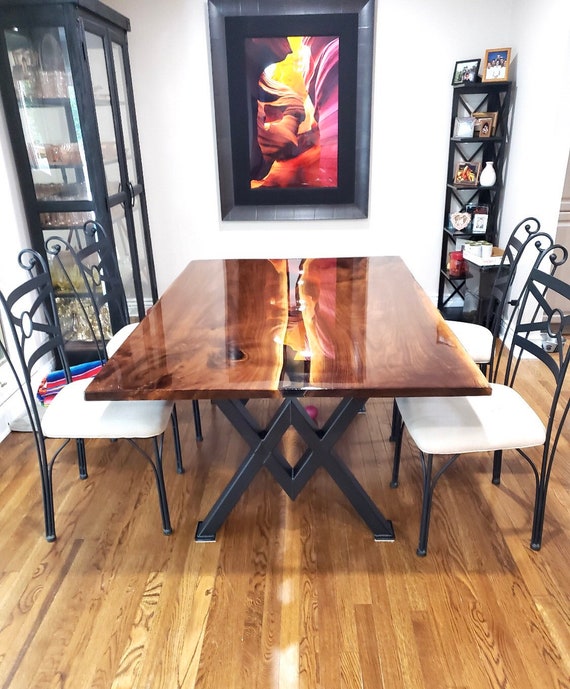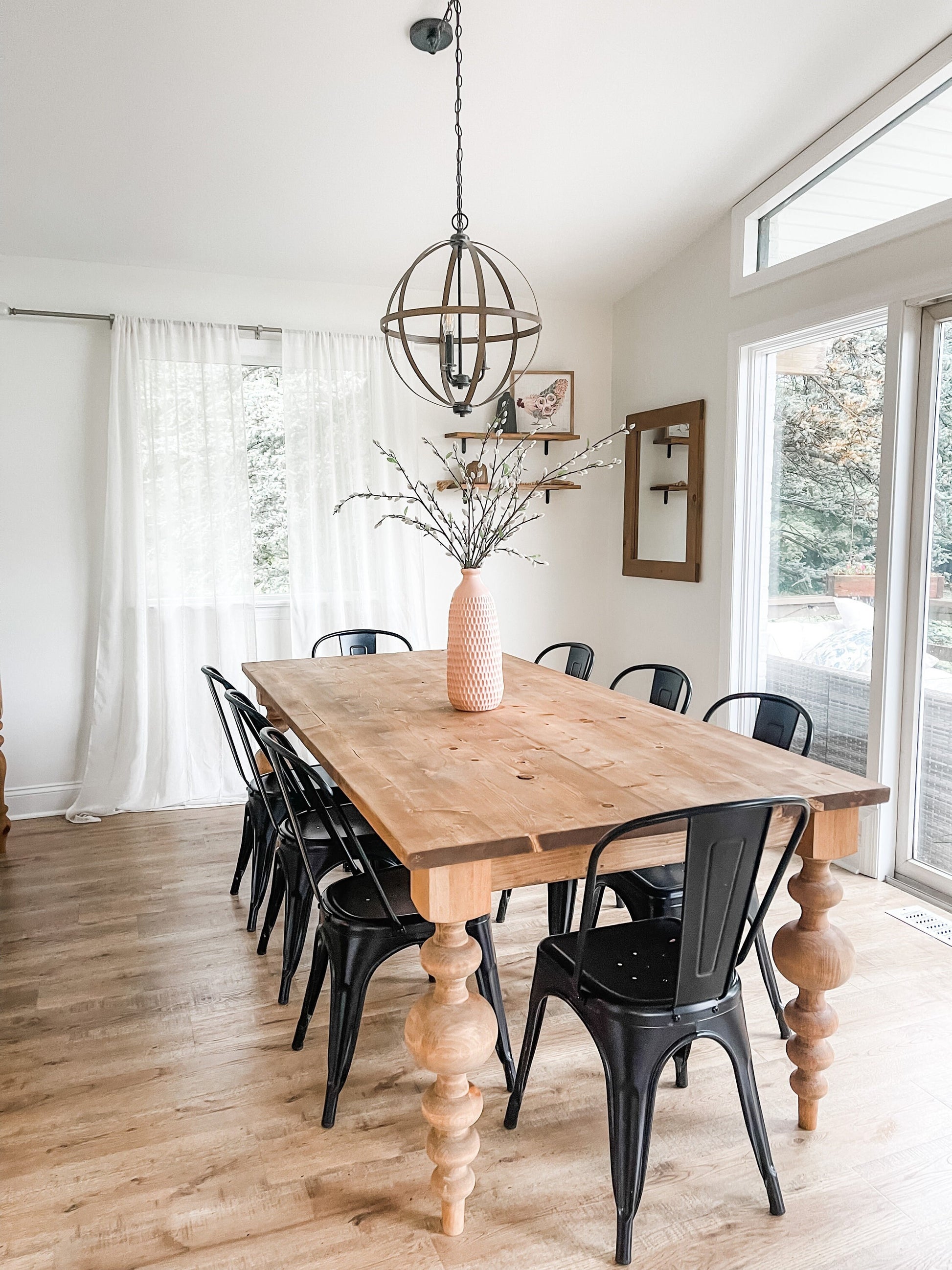The Impact of Dining Room Table Legs on Your Table's Overall Design
The Impact of Dining Room Table Legs on Your Table's Overall Design
Blog Article
From Traditional to Modern: Discover the Suitable Dining-room Table Legs for Your Style
While classic designs such as cabriole and transformed legs stimulate a feeling of classic elegance, contemporary designs like barrette and geometric alternatives offer an opportunity for striking aesthetic interest. As you think about these aspects, the question stays: exactly how can you perfectly integrate these varied leg styles to create an unified dining experience?
Comprehending Table Leg Styles
The range of dining-room table leg styles can significantly influence both the looks and capability of the space. Each leg style adds unique useful functions and visual aspects, catering to varied style choices and use requirements. Recognizing these designs is important for picking the appropriate table that aligns with your overall interior decoration vision.
For instance, conical legs supply a clean, traditional appearance that can improve a room's beauty, while pedestal bases supply security and optimize legroom, making them excellent for smaller sized rooms. Barrette legs, a hallmark of mid-century contemporary style, present an industrial flair, enabling for an airy, open feeling. Likewise, trestle legs stimulate rustic appeal, providing robust assistance and a sense of eternity.
Wood legs can bring heat and texture, whereas metal options usually communicate a smooth, modern vibe. Eventually, recognizing table leg designs is crucial for creating a natural eating location that shows individual design while making certain usefulness and convenience.
Standard Table Leg Options
When picking dining-room table legs, traditional options often embody classic style and workmanship. These styles show a rich heritage and a commitment to quality, making them suitable for those that appreciate traditional aesthetic appeals.
One of the most renowned traditional leg styles is the cabriole leg, defined by its elegant curved form. This style usually includes attractive makings and is most generally discovered in Queen Anne and Chippendale furniture. One more popular choice is the transformed leg, which flaunts a series of smooth, rounded forms that supply a timeless look while keeping security.
In addition, the straight leg, while simple, offers a sturdy and unadorned structure that can blend seamlessly with a range of tabletop designs. For those drawn to ornate describing, claw-and-ball feet legs evoke a feeling of majesty and can work as a magnificent focal point in any eating area.
Last but not least, stand bases, although not strictly legs, provide a different typical option that permits ample legroom and can be magnificently sculpted. Each of these conventional leg styles contributes to the total setting of a dining-room, weding function with visual appeal.

Modern Table Leg Designs
Modern table leg styles offer a varied array of styles that emphasize ingenious products and tidy lines. These designs typically prioritize functionality while functioning as striking centerpieces within an eating area. Minimal aesthetics prevail, with legs crafted from materials such as steel, glass, and crafted wood, which add to a airy and contemporary feel.
One popular layout is the hairpin leg, identified by its slim, conical framework that provides stability without frustrating the table top (dining room table legs). This style is often original site discovered in mid-century modern-day furniture and can easily enhance various table shapes. One more pattern is the use of geometric forms, where legs may handle unbalanced or angular forms, adding aesthetic passion and a touch of creativity

Blending Styles for Special Rooms
Frequently, house owners look for to develop unique eating areas that show their personal style by blending numerous design aspects. This approach enables the consolidation of varied aesthetic appeals, leading to a harmonious yet distinct setting. Pairing a rustic wooden table with sleek, modern steel legs can develop an attractive comparison that boosts the area's overall allure.
Additionally, integrating vintage table legs with modern table tops can stimulate a sense of background while maintaining a modern-day sensibility. Such combinations not just display private preference but also motivate creativity, permitting home owners to curate a room that feels both individual and inviting.
Shade plays a vital function in this mixing procedure; choosing table legs that match or comparison with the existing color pattern can enhance aesthetic passion. Whitewashed legs can soften the boldness of a dark table surface area, creating a well balanced aesthetic.
Tips for Choosing the Right Legs
Picking the right table legs is crucial for attaining both functionality and visual allure in your dining space. Begin by considering the overall design of your room. Typical setups gain from legs that include complex makings or transformed designs, while modern areas may require smooth, minimalist designs.
Next, assess the elevation and security of the legs. dining room table legs. Conventional dining tables range between 28 to 30 inches in height, so guarantee the legs enhance this measurement for comfort. Additionally, robust products, i was reading this such as hardwood or steel, can enhance stability and durability
Evaluate the leg form too-- options include straight, tapered, or pedestal styles. Straight legs supply a classic look, while conical legs can add a touch of beauty. Pedestal bases provide ample legroom and are perfect for smaller sized rooms.
Final Thought
In recap, selecting the optimal dining-room table legs needs careful factor to consider of both contemporary and typical styles. Conventional alternatives such as cabriole and turned legs supply ageless sophistication, while contemporary designs like barrette and geometric forms offer a modern touch. By balancing leg design, elevation, and product with the total decoration, a natural and inviting atmosphere can be attained. Eventually, the picked Continued table legs ought to reflect the desired visual, enhancing the dining experience within the room.
The selection of dining room table leg designs can substantially affect both the visual appeals and capability of the room. Eventually, recognizing table leg designs is crucial for creating a natural eating area that reflects personal style while making sure practicality and comfort.One of the most legendary standard leg styles is the cabriole leg, defined by its stylish curved shape. Straight legs supply a traditional appearance, while tapered legs can include a touch of beauty.In summary, picking the suitable eating area table legs requires cautious consideration of both conventional and modern designs.
Report this page